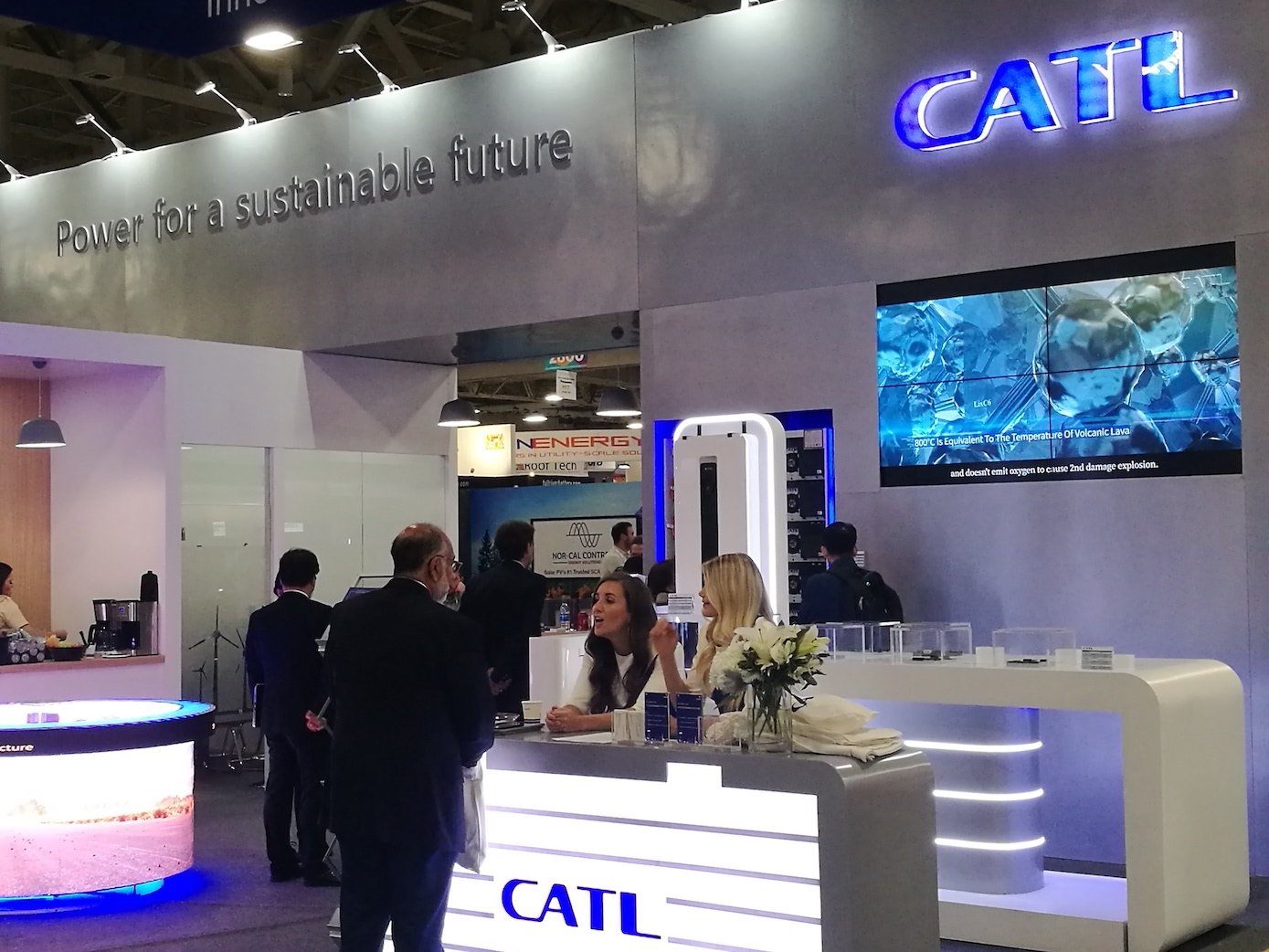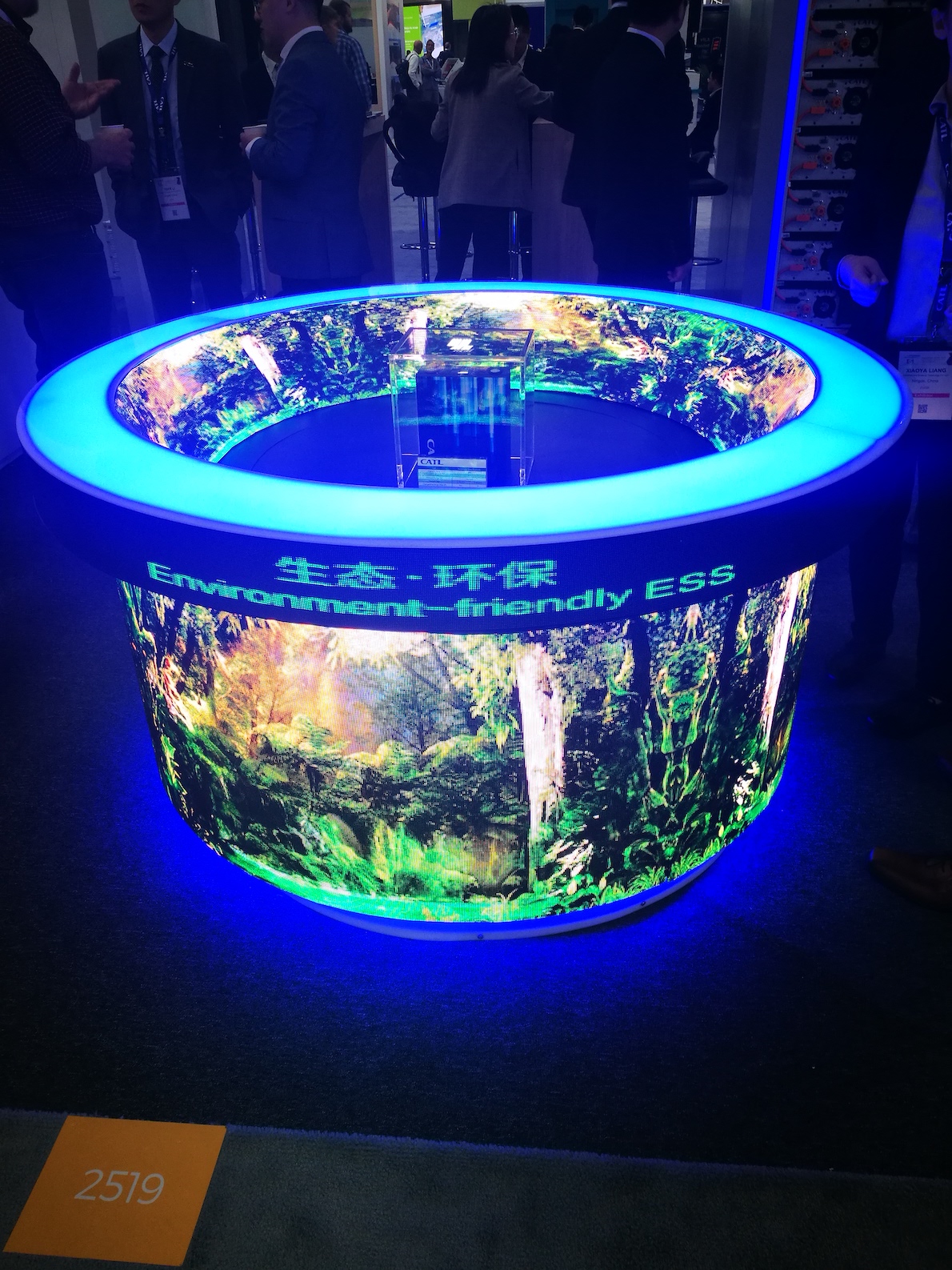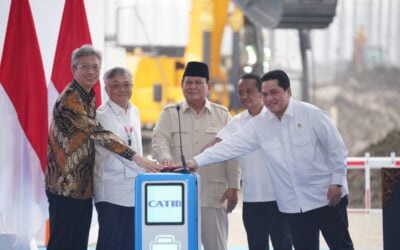
CATL sold 21.31GWh of lithium batteries in 2018, primarily to the EV market in China, but after exhibiting at two major trade shows in the west, claims its 12,000 cycle lithium iron phosphate batteries are ready to take on the stationary energy storage system (ESS) market, too.
Contemporary Amperex Technology Ltd, to give CATL its full monicker, employs more than 24,000 people globally and claimed in May this year to have partnerships with “US-based top tier solar companies” for 1.85GWh of batteries.
Enjoy 12 months of exclusive analysis
- Regular insight and analysis of the industry’s biggest developments
- In-depth interviews with the industry’s leading figures
- Annual digital subscription to the PV Tech Power journal
- Discounts on Solar Media’s portfolio of events, in-person and virtual
At this year’s Solar Power International / Energy Storage International in Salt Lake City, Utah, Energy-Storage.news spoke with a senior executive at one major developer of energy storage projects in the US, who said that CATL was considered capable of producing appropriate grid-scale energy storage systems using lithium iron phosphate (LFP) cells. BYD is another producer of LFP at scale, but is thought to be more focused on the Chinese domestic market.
The developer, who preferred to be unnamed, said that due partly to recent RFPs from numerous utilities stipulating the use of LFP in preference to NMC cells based more typically on the energy-dense battery technologies used in electro-mobility applications, CATL were of interest as a potential supplier, with negotiations underway.
Energy-Storage.news also asked CATL directly why its technologies would be suited for energy storage systems, when the company is best known for EVs.
“In addition to EV battery systems, ESS has been another important business area for CATL since its foundation in 2011,” a representative said.
“CATL has developed a wide range of products for ESS including battery cells, modules, racks, BMS and containers, which showcases CATL’s comprehensive capabilities across various applications – wind and solar ESS, grid frequency regulation, standby power, commercial and industrial ESS and residential ESS.”
The company representative claimed that its ESS solution can withstand as many as 12,000 charge/discharge cycles, supporting “up to 20 years of stable system operation,” touting also the thermal stability and safety of the battery due in part to the choice of LFP chemistry.
The company has already worked on a major project in China mixing various energy sources (wind, solar, concentrated solar power) in a large-scale hybrid, with energy storage at its heart. In that instance, 100MWh of storage was being deployed, this site reported back in February this year. The representative said that the company has now “developed partnerships with several companies in the ESS industry from the U.S. and EU for powering multi-gigawatt-hour energy storage projects together.”
The company also entered Japan’s burgeoning residential solar and storage market earlier this year. While we await further news of project and partnership announcements from those pipelines and perhaps from new business picked up at SPI in Utah last week, Energy-Storage.news also asked CATL what is coming in the future for the company in terms of ESS.
“CATL is currently developing a tailored battery system for ESS, which will enable better temperature consistency among cells and help control the system temperature more precisely and stably,” the representative said.
“This new technology will benefit the whole system by increasing energy density and lowering energy consumption. The next-generation product using this new technology will be introduced in 2020.”







